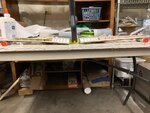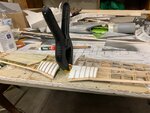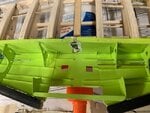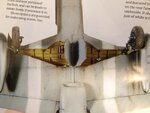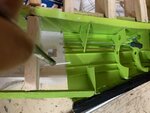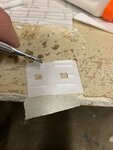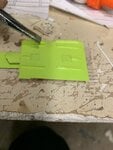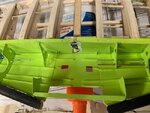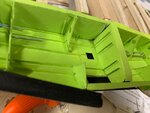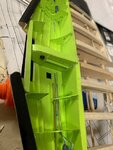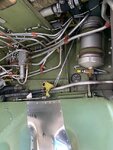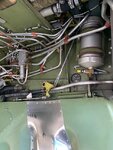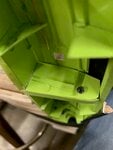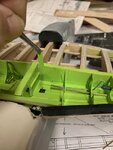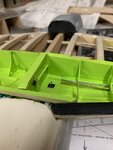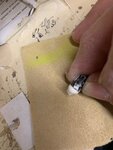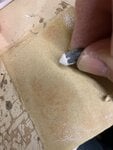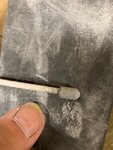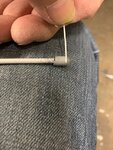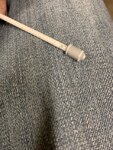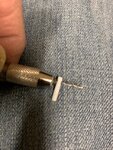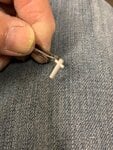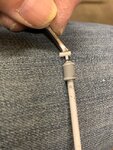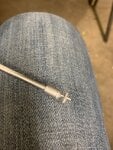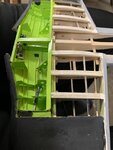- Thread starter
- #361
Skyediamonds
Staff Sergeant
- 1,362
- May 26, 2018
Gentlemen,
The time has finally arrived where I had to make a major decision and join the two wing panels together. I was concerned about adding too much (or too little) dihedral to the wings. At first, they appeared to be too low, but further references such as drawings and photos of the Mustang has showns my wing panels to be about right. The last picture on this post seem to bear this out.
Whew.
I used what we call here in the States, Gorilla Glue. That stuff is almost like a weld for all things nonmetallic. The properties of this glue.is such that it expands into small crevises and gaps as it dries. This is beneficial in a few ways: this is great for broken vases or objects that have scattered tiny pieces. The major components can be reassembled with the tiny pieces still missing and the glues fill in those gaps. It's also good for wood joints that are less than perfect and again, this glue will fill in those gaps. Thus, the instructions say to use this glue only sparingly as it can possibly crack the repair or join during its expansion. However, the trade off is that this glue really bonds and holds like a weld.
Boy, was I in for a surprise.
The time has finally arrived where I had to make a major decision and join the two wing panels together. I was concerned about adding too much (or too little) dihedral to the wings. At first, they appeared to be too low, but further references such as drawings and photos of the Mustang has showns my wing panels to be about right. The last picture on this post seem to bear this out.
Whew.
I used what we call here in the States, Gorilla Glue. That stuff is almost like a weld for all things nonmetallic. The properties of this glue.is such that it expands into small crevises and gaps as it dries. This is beneficial in a few ways: this is great for broken vases or objects that have scattered tiny pieces. The major components can be reassembled with the tiny pieces still missing and the glues fill in those gaps. It's also good for wood joints that are less than perfect and again, this glue will fill in those gaps. Thus, the instructions say to use this glue only sparingly as it can possibly crack the repair or join during its expansion. However, the trade off is that this glue really bonds and holds like a weld.
Boy, was I in for a surprise.
Attachments
Last edited:

